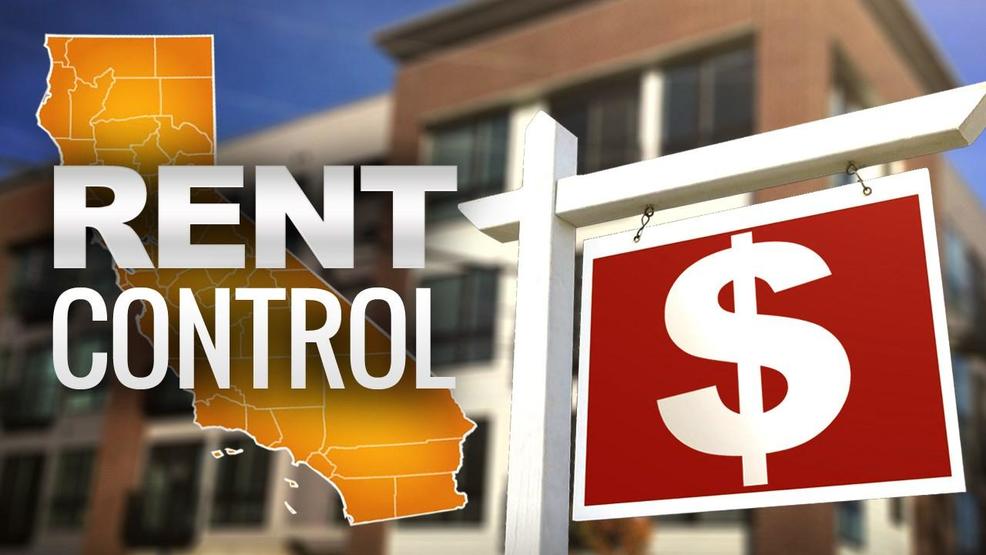
Ballot Measure Will Provide Affordable and Secure Housing to Californians
(From Press Release) – Today, the American Civil Liberties Union (ACLU) of Northern California, the ACLU of Southern California, and the ACLU of San Diego & Imperial Counties announced their endorsement of Proposition 10 that would restore the power of local governments to limit rent increases.
If passed, the November 6 ballot initiative will give local municipalities the authority to regulate rent increases, allowing communities to address California’s housing affordability and homeless crises.
Abdi Soltani, executive director of the ACLU of Northern California, said: “Without affordable housing, it is impossible to achieve our mission of being a guardian of justice, fairness, equality, and freedom. Restoring the power of local communities to limit rent increases is a key component to making housing affordable for all Californians, that is why we fully support  Prop 10.”
Prop 10.”
“Without the ability to put a check on unconscionable rent increases, low-income workers and families will continue to be rent-burdened, living paycheck to paycheck,” said Hector Villagra, executive director of the ACLU of Southern California. “Prop 10 will give local communities the power to stop corporate landlords and Wall Street speculators from driving up rents and making life unaffordable for working families.”
Since its inception nearly 100 years ago, the ACLU has long defended the fundamental rights outlined in the U.S. Constitution and the Bill of Rights. In California, the ACLU has vigorously championed economic rights as civil rights.
Norma Chávez-Peterson, executive director of the ACLU of San Diego & Imperial Counties, said: “Every family, every individual, every senior, every low-income worker deserves an affordable place to live. Housing is a human right.”
“We are proud to have the state’s three ACLU affiliates join us in the fight for safe, affordable, supportive housing to address the homeless crisis. For decades, the ACLU has been fighting for justice and fairness, and that is what Prop 10 will do,” said Joe Trippi, lead strategist of the Yes on 10 campaign. “Together we can level the playing field and bring parity to working class families across the state.”





A rent control state, what could possibly go wrong there?
Probably worth noting that Prop 10 wouldn’t impose rent control. It would simply open the door for local communities to impose it.
David: Local communities can already “impose” rent control. Proposition 10 would remove the “Costa Hawkins” restrictions that are currently in effect for any community throughout the state that enacts rent control:
https://ballotpedia.org/California_Proposition_10,_Local_Rent_Control_Initiative_(2018)
California cities under the “costa Hawkins” law can only “control” rents of older multifamily units (not homes or condos) and only “control” the rents when tenants stay in place. The new laws would allow cities to control the rents of all rental property and set up boards that would decide what property owners could charge new residents (forcing the people that own real estate to make massive “perfectly legal campaign contributions” so they will be “allowed” to increase rents at tuenover (going back to the days of Berkeley in the 70’s where it was harder to find an apartment than in any other city in the US but the politicians and rent board people got a lot more “voluntary donations” from property owners.
No one in the Yes on 10 campaign can tell me why if “controlling” rents is good why not “control” everything in town. Just think how great things would be if University Honda, Starbucks, Chevron and Safeway needed to ask a city board permission before raiding prices. Davis would be a nicer place to live if rents were capped at $1K/month you could buy a new car for $5K and, a cup of coffee, gallon of gas and bottle of wine were all capped at $2 each…
From what I read, it’s not likely that cities would enact rent control on new buildings, even if Costa Hawkins is repealed. (But, it would theoretically allow them to do so.)
Rent control certainly “benefits those who benefit” from it. (I know someone who is enjoying it, right now. It is incredibly, almost brutally effective, for those who are able to take advantage of it.) The person I’m thinking of would have to take a leave of their senses (bordering on insanity), to move out of that unit. (Sometimes, I wonder if that person might “mysteriously disappear” one of these days, as a result.) 🙂
Rent control can also help a lot of poor people get in to the real estate business without having to save for a down payment and make money renting the place on AirBnB (or even making and extra $1K a month for years renting the entire apartment to friends like so many do in SF) …
When the ACLU writes: “allowing communities to address California’s housing affordability and homeless crises” I wonder if even one person at the ACLU really thinks that even a single (actual living on the street) “homeless” person is there because of a rent increase related to lack of “rent control”. Does anyone reading this think that even one of the guys (and gals) sleeping in doorways in SF (that has rent control BTW) will say that they could afford the $3K/month SF rent of a few years ago but rather than move to one of the other 99% of the cities in America where you can rent a place for less than the SF median rent they decided to become “homeless”? Does anyone know any of the local Davis “homeless” that are now on the street due to a rent increase (or why they didn’t go rent a place for less in Woodland, Dixon or West Sac?).
I wonder if Ken read the recent study that linked cost of housing to homelessness.
I have read many of them and most re-define the word “homeless” to show an increase (a kid that can not sleep in the UCD dorms over Spring Break or a couple in Davis that moves in with family in Woodland rather than sign a lease at a higher rent are not really “homeless”) and none of the “studies” I have read have even made an effort to talk with the people that have worked for years helping and feeding the homeless to ask if even one of the guys (or gals) they know currently living on the street loaded their belongings in to a shopping cart and started sleeping next to the railroad tracks after a $100 rent increase…
So you’re criticizing the ACLU for relying on a number of studies on homeless to inform their view as opposed to using anecdotal evidence. Got it.
http://www.latimes.com/business/la-fi-ucla-anderson-forecast-20180613-story.html
Why would Ken start now?
In the comments of the other article posted on the Vanguard today, he asserted without any data or evidence that “most “progressive” cities are more white than other cities…” Just as one example, this study contradicts his claim: “A number of important demographic factors determine whether cities vote for liberals or conservatives, with race being the most important factor. Cities with predominantly large African American populations ended up as the most liberal cities in America, while the cities with the largest Caucasian populations wound up as the most conservative.” [https://alt.coxnewsweb.com/statesman/metro/081205libs.pdf]
David:
You can read the full study at the link and is shows that “higher median rent and home prices are strongly correlated with more people living on the streets or in shelters” but does not interview any people that work with the homeless to ask ‘What actually CAUSED the people you help to start living on the street or in a shelter” .
Living in areas with higher home prices and higher numbers of high priced European cars is strongly correlated with more kids going to college, but just like high home prices are not the “cause” of homeless high home prices are not the “cause” of kids going to college…
http://www.uclaforecast.com/uploads/forecasts/2018/June/uclaforecast_June2018_embargoed.pdf
P.S. Just like high rents don’t “cause” homeless rent control won’t reduce it (we don’t have guys sitting next to the railroad tracks sharing a bottle of cheap wine this afternoon saying “The Tanglewood apartments are going to look a lot better after the renovation, but I’m not going to lease a unit until I know that next years rent increase will be tied to CPI…”
P.P.S. Programs like Delancey Street in SF really will reduce the number of homeless people (and drug addicts and criminals) but it is sad that we can’t figure out how to expend it to every big city in CA.
Maybe Rik and can ask David why he posted:
“America’s most progressive, forward-thinking, open-minded, and social-justice-focused cities. They also have the worst racial disparities in the nation and some of the worst racial segregation.””
And then call some homeless shelters around the state and ask how many guys are there because of a recent rent increase (vs. mental illness, drug problems, alcohol issues, family issues, or job loss).
P.S. I’ve actually worked with the homeless throughout the state and “rent increase not capped to CPI due to lack of rent control” is not a big reason that people are sleeping on cots, in parks or next to the railroad tracks tonight”…
P. P.S. I would think that Rik would know that all “liberals” (and Democrats) are not “progressives”, just like all conservatives and Republicans are not “Alt Right” (few people of color at churches in the south will self identify as “progressives”, while many rich white kids in the getting whiter by the day Mission district do)…
Ken: you are confusing two different issues. It can both be true that conservative cities cities are more white than liberal/progressive cities and that liberal/progressive cities have terrible segregation and racial disparities. Keep in mind too. that the larger and wealthier a city is overall, the more likely that there are going to be more extreme disparities.
“conservative cities cities are more white than liberal/progressive cities”
Not necessarily true at all. African American and LatinX are more strongly opposed to gay and environmental issues for example.
David, Thanks for linking to http://www.latimes.com/business/la-fi-ucla-anderson-forecast-20180613-story.html.
That is one of the “instant classic” fake studies. There is no support whatsoever in the report for the conclusion the ACLU and many others have drawn. The study states “higher median rent and home prices are strongly correlated with more people living on the streets or in shelters”. In a classic, and in my opinion, intention confusion of correlation with causation they leave the implication that rising rents leads to homelessness. The author goes on to state “These individual at-risk factors interacting with the less affordable housing markets cause the rise of homelessness,”. The “interacting” being the special undefined sauce that magically overcomes having to show causation.
This study is sh1t.
Let me give actual causation. Los Angeles is a desirable place to live for many people. Housed people move there so rents and real estate values rise. Unhoused people also move there so the unhoused population also rises. Very simple and straight forward with no need to resort to any undefined “interacting” or trying to explain why only housed people want to move there and unhoused people do not.
Both housed and unhoused people are subject to similar migratory patterns.
Jim Hoch: you have read the actual study? Please state your criticisms of the methodology and statistical analysis employed. Please also provide comments on the flaws of the 3 similar studies with similar conclusions that the authors cite. Finally, please provide studies that contradict this findings.
Or are you just basing your comments on the brief LA Times article on the study? I guess you forgot to read in all the way through. Did you not notice this paragraph?: “Contrary to a belief among some that many homeless individuals move here from colder climates, 75% of L.A. County residents living on the streets had a home here before they lost it, according to the latest data from the Los Angeles Homeless Services Authority. And 65% of unsheltered homeless individuals have lived in the county for more than 20 years.”
I read the study and actually linked to it, if Rik click the link and find the data linking homeless to rents he should post it and I will congratulate him for being a better reader than I am.
If 25% of the 55,000 homeless in LA (going with the number reported by the LA Times) moved there that is over 13,000 people I would say that “many” homeless have moved to LA.
If over 13,000 people (almost double the population of Winters, CA) would not be considered “many” by Rik maybe he can tell us how many more homeless need to move to LA before it would be fair to say “many” of the homeless in town moved there.
P.S. Bonus question for Rik if he can guess what percentage of the current unhoused homeless in the greater Davis area (including Winders that does not have “many” people) would be back in an apartment if the rent went back to what it was when they moved on to the street after their last rent increase.
Perhaps you can explain how the Zillow study is wrong: “Zillow released a study that showed that a 5% rent hike in L.A. County — where more than 50,000 are estimated to be homeless — would cause 2,000 additional people to lose their homes.”
Also you write: “If 25% of the 55,000 homeless in LA (going with the number reported by the LA Times) moved there that is over 13,000 people I would say that “many” homeless have moved to LA.”
I don’t see where they report that. What they report is this: “75% of L.A. County residents living on the streets had a home here before they lost it” – that is, 75% had of the homeless had a home locally before they lost it, not necessarily 25% moved here from elsewhere.
I would like to think that David knows the difference between “lose their homes” (be forced to move somewhere cheaper) and “become homeless” (start sleeping next to the railroad tracks or in a shelter).
It sucks that I can’t buy a home in Atherton for $250K like in the 70’s, and I’m forced to live in Davis with 100 degree heat to afford a decent home but like increase in housing costs did not make me “homeless” it won’t make anyone else “homeless”.
It would probably be helpful to define the term as the government defines it and presumably measures it.
U.S. Department of Health and Human Services (HHS) use the following:
A homeless individual is defined in section 330(h)(5)(A) as “an individual who lacks housing (without regard to whether the individual is a member of a family), including an individual whose primary residence during the night is a supervised public or private facility (e.g., shelters) that provides temporary living accommodations, and an individual who is a resident in transitional housing.” A homeless person is an individual without permanent housing who may live on the streets; stay in a shelter, mission, single room occupancy facilities, abandoned building or vehicle; or in any other unstable or non-permanent situation. [Section 330 of the Public Health Service Act (42 U.S.C., 254b)]
An individual may be considered to be homeless if that person is “doubled up,” a term that refers to a situation where individuals are unable to maintain their housing situation and are forced to stay with a series of friends and/or extended family members. In addition, previously homeless individuals who are to be released from a prison or a hospital may be considered homeless if they do not have a stable housing situation to which they can return. A recognition of the instability of an individual’s living arrangements is critical to the definition of homelessness. (HRSA/Bureau of Primary Health Care, Program Assistance Letter 99-12, Health Care for the Homeless Principles of Practice)
Programs funded by the U.S. Department of Housing and Urban Development (HUD) use a different, more limited definition of homelessness [found in the Homeless Emergency Assistance and Rapid Transition to Housing Act of 2009 (P.L. 111-22, Section 1003)].
• An individual who lacks a fixed, regular, and adequate nighttime residence;
• An individual who has a primary nighttime residence that is a public or private place not designed for or ordinarily used as a regular sleeping accommodation for human beings, including a car, park, abandoned building, bus or train station, airport, or camping ground;
• An individual or family living in a supervised publicly or privately operated shelter designated to provide temporary living arrangements (including hotels and motels paid for by Federal, State or local government programs for low-income individuals or by charitable organizations, congregate shelters, and transitional housing);
• An individual who resided in a shelter or place not meant for human habitation and who is exiting an institution where he or she temporarily resided;
• An individual or family who will imminently lose their housing [as evidenced by a court order resulting from an eviction action that notifies the individual or family that they must leave within 14 days, having a primary nighttime residence that is a room in a hotel or motel and where they lack the resources necessary to reside there for more than 14 days, or credible evidence indicating that the owner or renter of the housing will not allow the individual or family to stay for more than 14 days, and any oral statement from an individual or family seeking homeless assistance that is found to be credible shall be considered credible evidence for purposes of this clause]; has no subsequent residence identified; and lacks the resources or support networks needed to obtain other permanent housing; and
• Unaccompanied youth and homeless families with children and youth defined as homeless under other Federal statutes who have experienced a long-term period without living independently in permanent housing, have experienced persistent instability as measured by frequent moves over such period, and can be expected to continue in such status for an extended period of time because of chronic disabilities, chronic physical health or mental health conditions, substance addiction, histories of domestic violence or childhood abuse, the presence of a child or youth with a disability, or multiple barriers to employment.